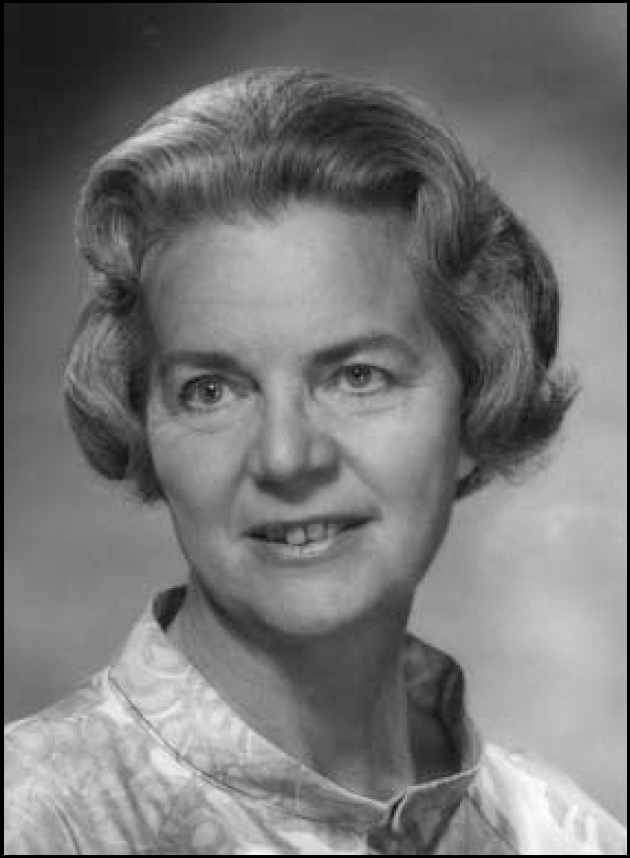
Formerly Consultant, Southampton Children's Hospital and Medical Director, Southampton Child Guidance Clinic
Mary Capes, as she was known, one of the early pioneers of child psychiatric practice in England, died on 19 October 2003, aged 93 years.
Mary was born in Pretoria, South Africa in 1909 and after her family returned to this country, she studied medicine at the Royal Free Hospital, qualifying in 1933. She soon moved into the psychiatric field, obtaining a junior post at St James Mental Hospital, Portsmouth. In the 1930s, child psychiatric training was mainly psycho-analytic and to this end she was analysed by W. W. Stekel, an early disciple of Freud. She also attended courses at the Tavistock Clinic and the West End Hospital for Nervous Diseases.
Portsmouth was well known for its provision of child mental health care, through both health and educational services. From her hospital base she set up a Children's Clinic in 1937. The outbreak of war in 1939 led to the evacuation of large numbers of children from Portsmouth and Southampton to less vulnerable parts of Hampshire. It quickly became apparent that separation from family stressed many of these children, triggering a variety of psychological, psycho-somatic and behavioural reactions such as enuresis. Hampshire County Council set up a multidisciplinary clinic which came under the direction of Mary and one of the ablest psychiatric social workers in the south, Marion Opie. These experiences in the early 1940s drew Mary's attention to the developmental dangers of parentectomy - some years before the insights of Bowlby were published. After the war she became medical director of South-ampton Child Guidance Clinic. She took up a parallel appointment as consultant psychiatrist at the Southampton Children's Hospital, where she saw at first hand that even short-term separations from parents could be traumatic.
Through the 1940s she played an important role in the development of child psychiatry in the United Kingdom. In 1945 she joined the Child Psychiatry Section of the Royal Medico-Psychological Association, was the honorary secretary from 1947 to 1949 and was chairman from 1957 to 1959. Historically, hospital and specialist services were poorly developed in her own clinical area (Southampton and Hampshire), but the situation improved in 1958 when the Wessex Hospital Region was established. Mary successfully promoted the mental health needs of children leading to the establishment of the Wessex Unit for Parents and Children and, later the Leigh House Adolescent Unit. She set up the Wessex Child Psychiatrists’ Group, the first of its kind.
In 1950 the World Health Organization (WHO) first focused its attention on child and family mental health, and Mary directed the first meeting, on child guidance practice in 1952, so becoming the WHO consultant in child psychiatry for Europe. Further, she organised a second multidisciplinary meeting the same year, and she headed a study group in Sweden in 1954, which considered how paediatricians and child psychiatrists could work together for the benefit of the hospitalised child. By then Bowlby's monograph Maternal Care and Mental Health was beginning to influence thinking and practice. Her international interdisciplinary study group experiences were brought together in a 1960 publication Conferences: their Nature and Dynamics and Planning.
In 1964 her husband became seriously ill and she retired prematurely to care for him. Regrettably, after his death, she decided not to return to the National Health Service. Later she formed a small research team to study outcomes of adolescent illness, funded by the Nuffield Foundation. One of the findings was that management of adolescent disturbance depended on point of entry to the system e.g. court, school or clinic - rather than psychological or behavioural characteristics.
Mary was a lady of great charm and elegance. Her open, unfussed, realistic approach to child mental health was appreciated by administrators and colleagues in related specialties. Her interest in art and architecture found expression in two remarkable Hampshire downland houses she helped design and create. She remained her essential self up to her ninetieth birthday. She is survived by her sister.



eLetters
No eLetters have been published for this article.